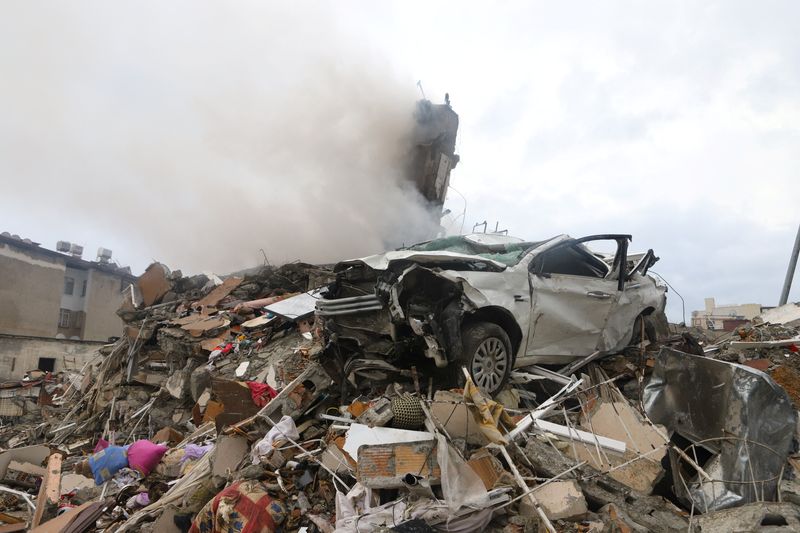By Gloria Dickie
LONDON (Reuters) - The magnitude 7.8 earthquake that struck Turkey and Syria on Monday is likely to be one of the deadliest this decade, seismologists said, with a more than 100 km (62 miles) rupture between the Anatolian and Arabian plates.
Here is what scientists said happened beneath the earth's surface and what to expect in the aftermath:
WHERE DID THE EARTHQUAKE ORIGINATE?
The epicentre was about 26 km east of the Turkish city of Nurdagi at a depth of about 18 km on the East Anatolian Fault. The quake radiated towards the northeast, bringing devastation to central Turkey and Syria.
During the 20th century, the East Anatolian Fault yielded little major seismic activity. "If we were going simply by (major) earthquakes that were recorded by seismometers, it would look more or less blank," said Roger Musson, an honorary research associate at the British Geological Survey.
Only three earthquakes have registered above 6.0 on the Richter Scale since 1970 in the area, according to the U.S. Geological Survey. But in 1822, a 7.0 quake hit the region, killing an estimated 20,000 people.
HOW BAD WAS THIS EARTHQUAKE?
On average, there are fewer than 20 quakes over 7.0 magnitude in any year, making Monday's event severe.
Compared with the 6.2 earthquake that hit central Italy in 2016 and killed some 300 people, the Turkey-Syria earthquake released 250 times as much energy, according to Joanna Faure Walker, head of the University College London Institute for Risk and Disaster Reduction.
Only two of the deadliest earthquakes from 2013 to 2022 were of the same magnitude as Monday's quake.
WHY WAS IT SO SEVERE?
The East Anatolian Fault is a strike-slip fault.
In those, solid rock plates are pushing up against each other across a vertical fault line, building stress until one finally slips in a horizontal motion, releasing a tremendous amount of strain that can trigger an earthquake.
The San Andreas Fault in California is perhaps the world's most famous strike-slip fault, with scientists warning that a catastrophic quake is long overdue.
The initial rupture for the Turkey-Syria earthquake kicked off at a relatively shallow depth.
"The shaking at the ground surface will have been more severe than for a deeper earthquake of the same magnitude at source," David Rothery, a planetary geoscientist at the Open University in Britain, said.
WHAT KIND OF AFTERSHOCKS CAN BE EXPECTED?
Eleven minutes after the initial quake, the region was hit by a 6.7-magnitude aftershock. A 7.5-magnitude quake came hours later, followed by another 6.0 spasm in the afternoon.
"What we are seeing now is the activity is spreading to neighbouring faults," said Musson. "We expect seismicity to continue for a while."
After the deadly 1822 event, aftershocks carried on into the following year.
WHAT MIGHT THE FINAL DEATH TOLL BE?
Earthquakes of similar magnitudes in populated areas have killed thousands of people. Nepal's 7.8-magnitude earthquake in 2015 claimed nearly 9,000 lives.

"It's not going to be good," said Musson. "It will be in the thousands, and could be in the tens of thousands."
Cold winter weather, he added, means that people trapped under rubble have less chance at survival.